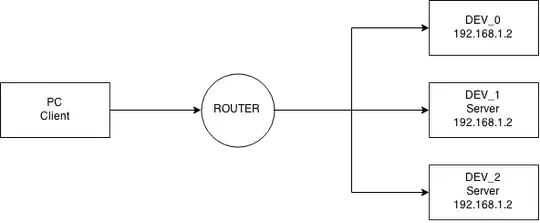I've developed a Multicast UDP client/server application, which allows a user to remotely change the network configuration of devices belonging to the same multicast group. But what if a device was assigned the same IP address as another device within the same LAN? Will both devices receive the Multicast UDP request? For instance, consider the following:

DEV_0 does not belong to the multicast group 226.1.1.1. DEV_1, DEV_2 and PC (Client) do.
So if the client sends a UDP message (request), to group 226.1.1.1, do DEV_1 and DEV_2 both receive that request? Wouldn't duplicate IP addresses mess up the entries in the IGMP table?
NOTE: addressing the devices using my application is done using serial numbers! This way I can distinguish between devices. Of course the devices must first receive the request in order for the whole application to work.